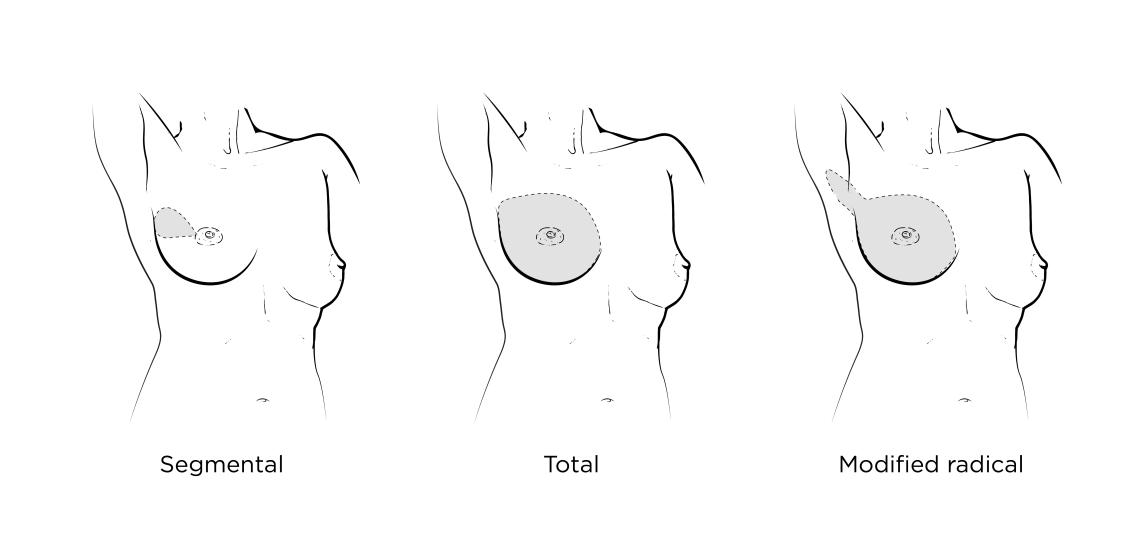Dr. Alastair Thompson explains what one can expect before, during and after breast surgery.
A mastectomy is surgery to remove the entire breast. Usually, some of the skin and the nipple are also removed. The surgery is most often done to treat breast cancer. There are different types of mastectomies. Which one your surgeon performs depends on the type of breast problem you have and your own preferences.
A mastectomy is the surgical removal of the breast. It is used to treat breast cancer.
Mastectomy procedures include:
- Total or simple mastectomy, which is the removal of the whole breast.
- Modified radical mastectomy, which is the removal of the whole breast and the lymph nodes under the arm (axillary lymph nodes).
- Radical mastectomy, which is the removal of the breast, chest muscles, and all of the lymph nodes under the arm (axillary lymph node dissection). This surgery is rarely used now.
Depending on the location of the tumor in the breast and other factors, some women may be able to have a skin-sparing or nipple-sparing mastectomy. Skin-sparing mastectomy leaves most of the skin that was over the breast, except for the nipple and the areola. Nipple-sparing mastectomy saves the skin over the breast and it saves the nipple and areola.
The removal of the breast before cancer is diagnosed is called a prophylactic mastectomy. This type of mastectomy can be used to prevent breast cancer in women who have an extremely high risk of developing the disease.
Segmental, total and modified radical mastectomy sites.
How is a mastectomy done?
In a simple or total mastectomy, the entire breast is removed. The lymph nodes may be removed. This surgery is often done for women who have ductal carcinoma in situ (DCIS) or for women who have invasive breast cancer. This surgery is also used for women who are having a breast or both breasts removed to prevent breast cancer.
In a modified radical mastectomy, the entire breast and the lymph nodes under the arm (axillary lymph nodes) are removed.
In breast-conserving surgery, the tumor and some healthy breast tissue are removed. Most of the breast remains. The doctor may remove only the cancer and a small part of the breast or up to about a quarter of the breast. The amount of breast tissue that is removed is different for each surgery.
A skin-sparing technique may be used for a simple or modified radical mastectomy. The breast tissue is removed through a cut that is made around the nipple. This technique does not harm the skin, and sometimes the nipple can be saved. Lymph nodes may be removed through the same cut made around the nipple or through another cut in the armpit.
A radical mastectomy is very rarely done. In this surgery, the entire breast, all of the lymph nodes in the armpit, muscles under the chest, and some of the surrounding fatty tissue are removed. It is used only when a woman has many tumors and when cancer has entered the chest.
The type of surgery you have depends on:
• The tumor size, type, and location.
• The size of your breast.
• The cancer stage.
• Whether or not the cancer has spread to the lymph nodes.
• Whether or not you have had radiation treatment.
• Your age and health.
• You and your doctor can decide which surgery is right for you.
© 2016-2019 Healthwise, Incorporated.
Reconstruction
Breast reconstruction: One of our specialist plastic surgeons may be able to reconstruct the breast with implants or normal tissue during the same operation. If you have breast reconstruction, a skin sparing mastectomy or nipple sparing mastectomy may be good option.








 Credit
Credit
